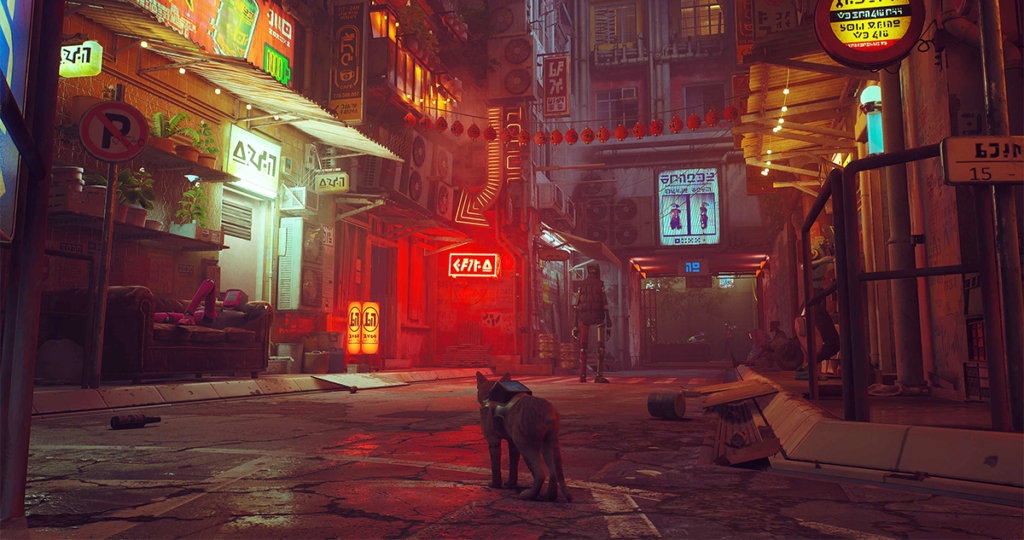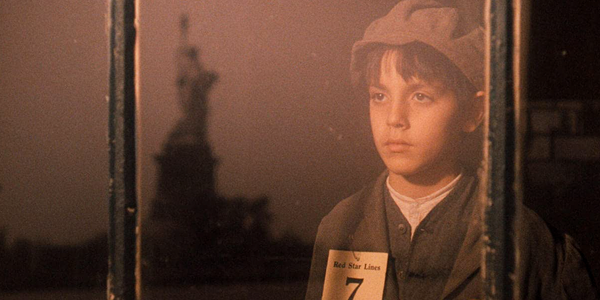also on cineluxe
Sign up for our monthly newsletter
to stay up to date on Cineluxe
This home cinema-friendly game goes decidedly against the grain, using deep-bass purring instead of mayhem to give your subwoofers a workout
by Dennis Burger
August 12, 2022
From time to time, a video game comes along that reaffirms the validity of the medium and forces a conversation about whether interactive fiction should be seen as art. Off the top of my head, a non-comprehensive list of a few such landmark games would have to include Super Metroid; PaRappa the Rapper; Papers, Please; Minecraft; Disco Elysium; and The Last of Us and its sequel.
It’s a bit too early to say whether Stray will join that pantheon, but it might. Not because of its graphics or sound or even because of its gameplay. Those help, but what really makes Stray such a wonderful experience is that it uses all the hooks, tropes, and trappings of video games to say something fundamental about the nature of life that’s wholly antithetical to everything we think of as inherent to gaming.
You wouldn’t necessarily pick up on that from the premise. You play as a cat—not a cartoon or anthropomorphic cat, but a bog-standard Felis catus whose only skills are meowing, jumping, and scratching things, who roams the surface of a post-apocalyptic world with his family. One day, though, he falls into the sewers and ends up in a dystopian subterranean cityscape highly reminiscent of the Kowloon Walled City by way of the Los Angeles seen in Blade Runner. That plants Stray firmly within a tradition of fiction that employs architectural stratification as a metaphor for social stratification—everything from Metropolis to Star Wars: The Clone Wars to the theme song for The Jeffersons—with the major difference that in the world of this game, there’s no society left. At least not an obvious one.
It’s obvious from the giddy-up, though, that the goal is to return to the surface to be with your feline family. The curious thing is that neither the game nor the world in which it’s set puts a ton of pressure on you to do so at any appreciable pace. In fact, aside from obvious action set pieces, it’s exactly the opposite. At odd intervals it encourages you to scratch out on a spot on a rug, curl up, and nap. And it doesn’t do so by saving your progress or refueling your energy or any of the normal sort of video game rewards. It’s a nap for the sake of a nap. The camera pulls back, the sound effects get a little more diffuse, and if your subwoofers can handle truly subsonic bass, you’ll feel as much as hear the purring of your little feline character as he drifts into a slumber. The whole audiovisual experience of it all is your reward, and there’s something refreshing about that. If anything, it feels sort of like those “lo-fi beats” screensavers that captivate people for hours on end on Twitch and YouTube.
It’s just one of any number of ways the game encourages you to live in the moment, to be present, to experience the fleeting now of it all. Another way it accomplishes this is by surrounding you with a world that feels legitimately, chaotically real. Built, sure, but by a gaggle of architects who never met, not a solitary game-world designer. There are alleyways and rooms and ledges and awnings to be explored that serve no purpose other than to delight the explorer’s heart. Dead-ends that would feel like punishment for bad navigational choices in any other game feel instead like unexpected rewards: “If not for that wrong turn or that missed jump, I wouldn’t have ended up seeing this!” That’s a neat trick. It’s the exact opposite of the theme-park mentality that has driven even supposedly open-world games for years.
But, getting back to the graphics and sound: Both make this whole virtual reality a little less virtual and a lot more real. The lighting—a lot of which comes from screens and neon lights—not only serves as the occasional subtle beacon when it’s time to stop clawing at sofas and make your way to another part of the world, but also helps set the overall mood.
The audio, meanwhile, isn’t mixed in Dolby Atmos but you’d never know that if I didn’t tell you. It upmixes gorgeously into the immersive format, mostly because the sound is already frighteningly immersive even in 5.1. Close your eyes and you can sense where you are in this dilapidated subterranean cityscape. You can hear the dripping of water from the storm sewers, the hum of electric lighting, the pitter-pat of your character’s claws as they skitter across surfaces ranging from steel to cement, reverberating off the walls around you to create the sort of believably subtle sonic textures we rarely experience in Hollywood movies, much less video games—much less super-low-budget indie video games. The air in your room takes on the quality of the environments you explore rather than merely slinging sound effects at your head. It’s the most convincing sound experience I’ve had in my media room since I can’t remember when.
Perhaps more than anything, what sets Stray apart is its rebellious hopefulness. It’s a defiantly uplifting story about stopping to smell the roses even when there are no roses to be smelled. It’s about the importance of fellowship, the power of cooperation, and the joy of swatting things off tables and shelves for no reason whatsoever. It’s a powerful exercise in empathy, an ode to individuality, a meditation on community, and simply one of the most heartwarming tales I’ve experienced in any medium in quite some time.
Dennis Burger is an avid Star Wars scholar, Tolkien fanatic, and Corvette enthusiast who somehow also manages to find time for technological passions including high-end audio, home automation, and video gaming. He lives in the armpit of Alabama with his wife Bethany and their four-legged child Bruno, a 75-pound American Staffordshire Terrier who thinks he’s a Pomeranian.
PICTURE | Hyper-detailed environments and deliciously specular lighting effects help make the world of the game feel convincingly real
SOUND | The audio isn’t in Atmos but does up-mix gorgeously into the immersive format—mostly because the sound is already deeply immersive even in 5.1
© 2023 Cineluxe LLC






